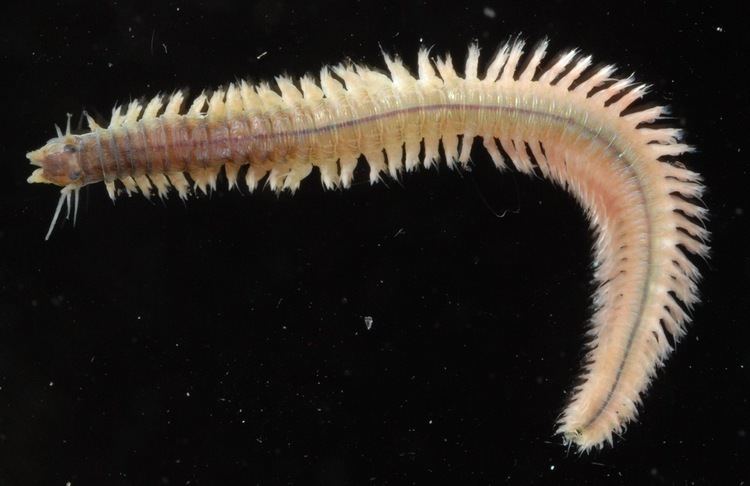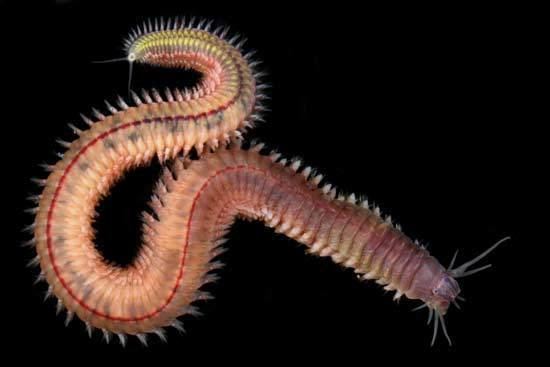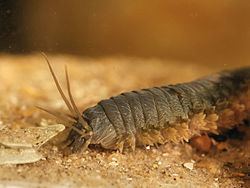Rank Family | Scientific name Nereidae Order Phyllodocida | |
 | ||
Lower classifications | ||
Nereididae (formerly spelled Nereidae) are a family of polychaete worms. It contains about 500 – mostly marine – species grouped into 42 Genera. They may be commonly called ragworms or clam worms.
Contents

35-Nereididae
Characteristics

The prostomium of Nereididae bears a pair of palps that are differentiated into two units, the proximal unit is much larger than the distal unit. Parapodia are mostly biramous (only the first two pairs are uniramous). Peristomium fused with the first body segment, with usually two pairs of tentacular cirri. The first body segment with 1-2 pairs tentacular cirri without aciculae. Compound setae present. Notopodia are distinct (rarely reduced), usually with more flattened lobes, notosetae compound falcigers and/or spinigers (rarely notosetae absent). They have two prostomial antennae (absent in Micronereis). Their pharynx, when everted, clearly consists of two portions, with a pair of strong jaws on the distal portion and usually with conical teeth on one or more areas of both portions. Most genera have no gills (if present, they are usually branched and arise on mid-anterior segments of body). The larval body consists of four segments.
Jaw material

Ragworms' teeth are made of a very tough, yet lightweight material. Unlike bone and tooth enamel, this is not mineralised with calcium, but is formed by a histidine rich protein, with bound zinc ions. Research on this material could lead to applications in engineering.
Systematics

Nereididae are currently considered a monophyletic taxon. Their closest neighbours in polychaete phylogenetic tree are Chrysopetalidae and Hesionidae (the superfamily Nereidoidea).
Nereididae are divided into 42 genera, but the relationships between them are as yet unclear. The family contains traditionally three subfamilies - Namanereidinae, Gymnonereinae and Nereidinae.
Ecology
Ragworms are predominantly marine organisms that may occasionally swim upstream to rivers and even climb to land (for example Lycastopsis catarractarum). They are commonly found in all water depths, foraging in seaweeds, hiding under rocks or burrowing in sand or mud. Ragworms are mainly omnivorous but many are active carnivores. Nereids only breed once before dying (semelparity) and most of them morph into a distinct form to breed (epitoky).
Ragworms are important food sources for a number of shore birds
Human use
Ragworms such as Hediste diversicolor are commonly used as bait in sea angling. They are a popular bait for all types of wrasse and pollock. They are also used as fish feed in aquaculture.
Ragworms, specially Tylorrhynchus heterocheatus are considered a delicacy in Vietnam.
